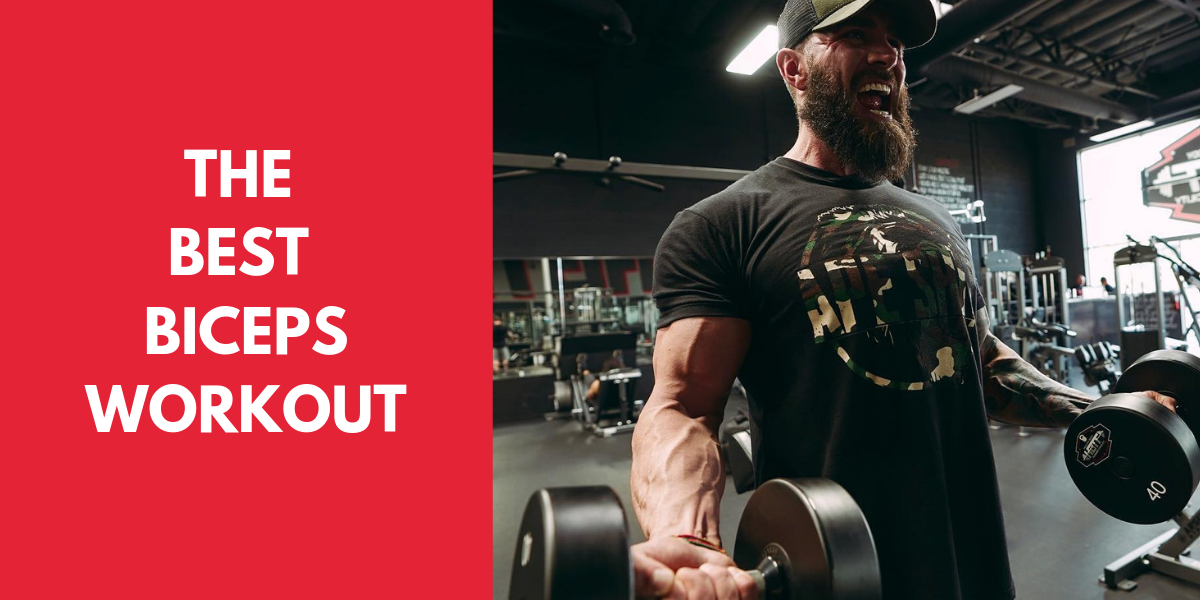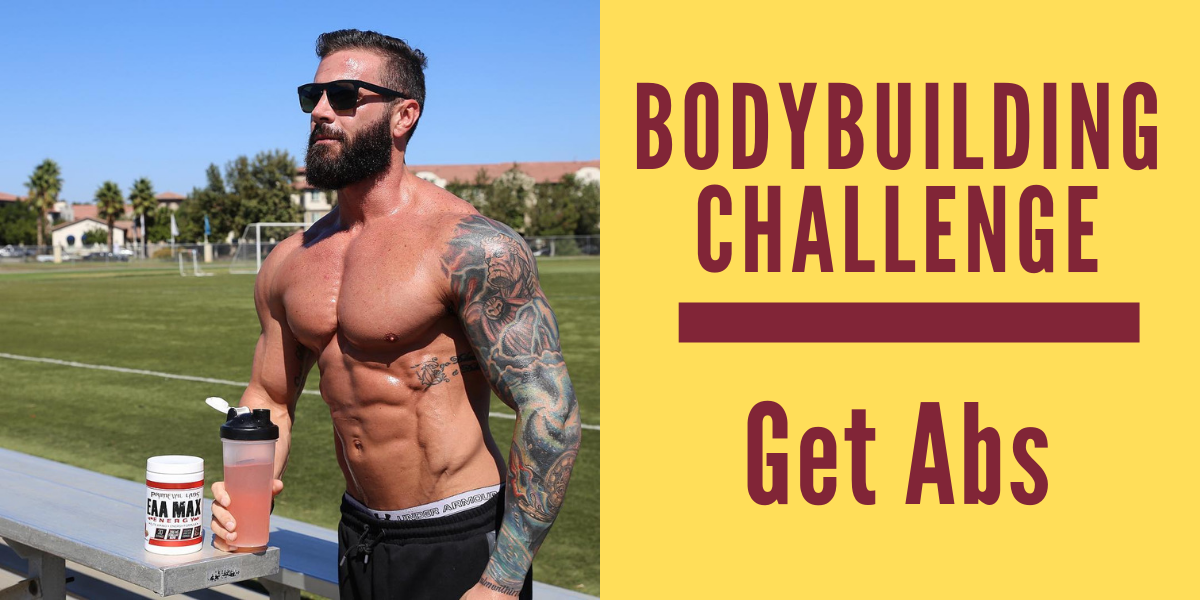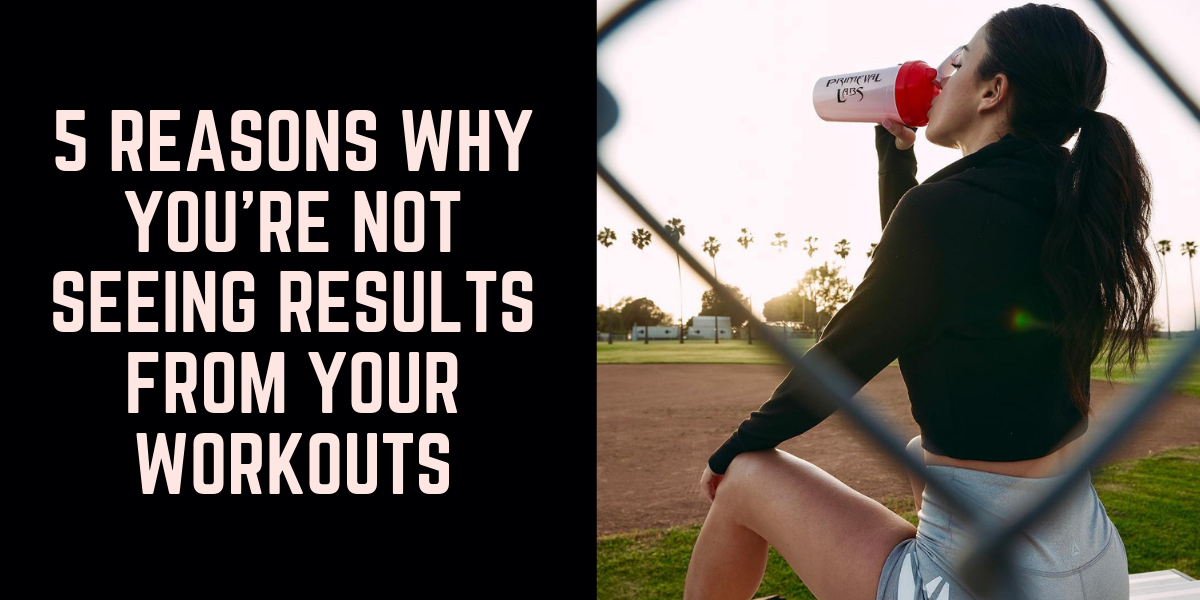Chances are, if you’re reading this article, your biceps aren’t quite as big and muscular as you’d like, and you’re ready to make some serious changes.
The good news is, we can help you grow those puny pistols with this comprehensive 4-week hardcore biceps workout
But, before we get to the best biceps training program, let’s take a quick look at the anatomy of the biceps. By understanding the form and function of the biceps, you'll be better equipped to know how to best attack them in your training.
Let's GO!
Need a Boost?
Looking to take your performance, energy, and muscle pumps to the next level?
Primeval Labs Mega Pre is a stimulant-free pump pre workout designed to support athletic performance, blood flow, and training intensity.

A Closer Look at the Biceps
Biceps Brachii
The biceps brachii is a two-headed muscle located on the front of the upper arm that crosses the shoulder and elbow joint.
The long head of the bicep is located on the lateral side of your arm near the lateral head of the triceps, while the “short” head is located on the inner side of the arm.
As you probably know, the primary function of the biceps brachii is elbow flexion, but it’s also involved in supination of the wrist.
Now, you might think it a bit unnecessary to spend some time discussing the ins and outs of the biceps.
But, knowing the structure and functions of the biceps will pay great dividends when it’s time to construct the best biceps workout. With this knowledge, we’ll now know which types of exercises as well as hand grips to use to emphasize one region of the biceps over the others.
And remember, all of this is in pursuit to build the best pair of biceps possible. So while you may have made some solid gains just performing barbell curls and hammer curls for a few years. That’s not going to cut it anymore...at least if you want to fully develop the biceps.
For example, if you want to shift the focus of the barbell curl onto the short head of the biceps, you will want to increase shoulder flexion (bringing the elbows in front of the body) and/or use a wider grip on the bar.
On the other hand, if you wish to focus more tension onto the long head of the biceps, you need to increase shoulder extension (bringing the elbows behind the body), or use a more narrow grip on the barbell (which is easier to accomplish than bringing the elbows behind the body, as is the case in a drag curl).
Brachialis
The unsung hero of the biceps is the brachialis. It lies beneath the biceps and assists in flexing your arm.
While the brachialis doesn’t get quite the same love as the biceps, it’s just as important to the overall appearance of your arms.
A well-developed brachialis creates the illusion of a giant “knot” situated in between your biceps and triceps. This “knot” helps provide greater separation and definition in your arms when they’re flexed.
It also helps “push up” the biceps, giving you a better “peak”.
5 Best Biceps Training Tips
Start with a Compound Movement
Most bicep workouts involve nothing but 10 different variations of curls. While we all love a great “bro”-style arms workout from time to time, using only isolation movements (i.e. curls) is severely hampering your biceps growth.
To build stronger, more powerful biceps, as well as help provide additional overload, you need to incorporate some compound exercises at the beginning of every biceps workout that involves the biceps.
As you’re aware, just about any pulling movement recruits the biceps to some degree, and our absolute favorite compound exercise for overloading the biceps are heavy weighted chin ups.
Using a supinated grip, allows you to more completely engage the biceps than you would be using a wider, pronated grip.
Beginning your biceps training with weighted chins also helps increase your weekly volume for your back, which most people are sorely lacking in their training programs.
Make EVERY Rep Count!
The biceps are a rather small muscle in comparison to other major muscle groups of the body, such as the pecs, lats, or quads. Furthermore, the biceps also have a significantly smaller range of motion than other muscle groups, which means they aren’t under tension for that long.
This tension deficit is one of the reasons many individuals experience difficulty with effectively training the biceps to grow.
Basically, they don’t put under enough stress on the muscles during training.
But, that’s an easy fix.
How so?
By making each and every rep count.
Typically, when curling a weight, you’ll see lifters mindlessly go through the motions, swinging their arms up and down, happy to “check the box” on their workout.
Having this kind of attitude is exactly why many lifters never fully develop their arms.
To get more out of your curls, you need to “milk” every rep.
Instead of heaving the weight up and letting gravity pull it down, “resist” the weight down using a controlled 3-second eccentric to lower the weight.
At the top of every rep, squeeze your biceps as hard as you can for a count of 1-1000. And, at the bottom of the rep, make sure you’re getting a full, complete stretch on the biceps by flexing your triceps.
Basically, you want to maximize every second that your biceps are under tension. And you do this by making every rep as hard on the muscle as possible. The extra tension placed on your biceps will help spark new growth and lead to significant changes in your overall bicep development.
Variety is Good
Conventional bicep workouts give you a handful of exercises each of which you perform for 8-12 reps. And, while there’s nothing “wrong” with this style of training, it can become boring after a while, which leads to a decrease in focus and mental intensity when training.
This ultimately means you’re not going to train as hard as you could, therefore making less than optimal gains.
You wouldn’t use just one set of rep ranges to train your quads, chest, or back, so why is it that we tend to only train the biceps with moderate reps?
It just doesn’t make sense.
The biceps should be trained with a variety of rep ranges and intensification techniques (drop sets, 21s, etc) to maximally stimulate all of the muscle fibers for optimal development and growth.
Check Your Ego at the Door
As herculean as you might feel grabbing the 50s off of the dumbbell rack, the likelihood you’re using proper form during your dumbbell curls is slim to none.
What is more likely is that you are using your whole body to heave the weights up, calling upon the muscles in your forearm, shoulder, and back to sling the weight up to compensate for your weak biceps.
Building bigger biceps starts with checking your ego the second you walk in the gym.
You should only use a weight that you can control through the entire range of movement. Now, this doesn’t mean you have to only lift the pink dumbbells. You should choose a weight that allows you to fail within the given rep ranges below, while at the same time maintaining perfect form.
Chase the Pump
The pump has been something held sacrosanct by lifters for decades, and for good reason -- it actually helps build muscle.
You read that right. The pump isn't just for aesthetics and helping you look better in your t-shirt. It can actually promote hypertrophy via increased cellular swelling and the generation of metabolites.
Getting a massive pump is best accomplished using the right mixture of load, rest periods, and intensity techniques.
Personally, we like to use moderate weights for higher reps with shorter rest periods as this allows for more time under tension, thereby accumulating more metabolic stress.
Speaking of chasing the pump, let's now discuss a few advanced training techniques to help build bigger biceps!
Advanced Biceps Training Techniques
21s
A staple of elite bodybuilders and personal favorite of ours are “21s”.
Each set of “21s” consists of 21 reps.
You start your set by performing 7 reps in the bottom half of the curl, immediately followed by another 7 reps from the midpoint to the top of the curl, and then finally move onto 7 reps using a full range of motion.
Weight selection is crucial here. Chances are pretty good that the weight you typically use for a set of 8-10 reps will be too heavy for 21s. You’re better off starting with your 12 or 15-rep max and adjusting over the coming weeks.
Drop Sets
Drop sets are another advanced training technique that helps you increase time under tension for the biceps and cram in more volume in a short amount of time.
Drop sets also allow you to push past failure, which helps you get more work from your exhausted muscles, leading to better gains.
In the workout below, these will be written as “10/10/10”.
For your first set of 10 reps, use a weight you can easily lift for 10-12 reps. Perform 10 clean reps, then immediately set the weight down and adjust the weight to approximately 75% of your first set.
Then perform another 10 reps.
After those 10 reps are complete, put that weight down and immediately pick up a weight that is roughly 50% of your starting weight.
Knock out a final 10 reps, and pray your arms don’t fall off.
Over the course of a single set, you will have performed 30 total reps, generating a lot of metabolic stress, maximizing muscle fiber recruitment, and generating a surreal muscle pump.
Biceps Band Burnout
Anyone who thinks resistance bands can’t be effective training tools for muscle growth has never performed used them like you’re about to.
The goal with the biceps band burnout is exceedingly simple -- grab a light-to-medium resistance band, set up in a curl position, start your stopwatch, and perform 100 bicep curls in as little time as possible.
Now, we realize you probably won’t be able to do all 100 reps right out of the gate (if you can, you whiffed on the resistance band selection).
You’ll likely need to take several “mini-breaks” in order to complete all 100 reps. Try to keep the rest limited to 10-15 seconds (a la rest-pause training), but never let go of the resistance band until all 100 reps are completed.
The goal of the “burnout” is simple -- drive as much blood as possible to your biceps and wring every last bit of energy from them.
An added bonus of the resistance band is that maintains tension on the bicep through the entire range of motion (and even makes it more challenging at the top of the exercise), something you won’t get with free weights, like barbells, dumbbells or kettlebells.
Record how long it takes you to perform 100 curls, and the next workout aim to complete all 100 reps in less time than the previous workout.
The Best Biceps Workout
|
Week 1 |
Sets |
Reps |
Rest |
|
Weighted Supinated Chin Up |
4 |
6 |
120 sec |
|
EZ Bar Preacher Curl |
3 |
8-10 |
90 sec |
|
Standing Dumbbell Curl |
3 |
10 |
60 sec |
|
Rope Hammer Curl |
3 |
12 |
60 sec |
|
Bicep Band Burner |
1 |
100 |
0 sec |
|
Week 2 |
Sets |
Reps |
Rest |
|
Weighted Supinated Chin Up |
5 |
5 |
120 sec |
|
EZ Bar Preacher Curl |
4 |
8-10 |
75 sec |
|
21s (Dumbbells or EZ Bar) |
3 |
21 |
60 sec |
|
Rope Hammer Curl |
3 |
10/10/10 |
60 sec |
|
Bicep Band Burner |
1 |
100 |
0 sec |
|
Week 3 |
Sets |
Reps |
Rest |
|
Weighted Supinated Chin Up |
4 |
8 |
120 sec |
|
EZ Bar Preacher Curl |
4 |
8-10 |
60 sec |
|
21s |
3 |
21 |
60 sec |
|
Rope Hammer Curl |
3 |
10/10/10 |
45 sec |
|
Bicep Band Burner |
1 |
100 |
0 sec |
|
Week 4 |
Sets |
Reps |
Rest |
|
Weighted Supinated Chin Up |
4 |
10 |
120 sec |
|
EZ Bar Preacher Curl |
4 |
8-10 |
45 sec |
|
21s |
3 |
21 |
60 sec |
|
Rope Hammer Curl |
3 |
10/10/10 |
30 sec |
|
Bicep Band Burner |
1 |
100 |
0 sec |
Enhance Your Biceps Training with Mega Pre!
Primeval Labs Mega Pre was made for biceps training.
Each serving contains powerful pump-enhancing nutrients including L-Citrulline, GlycerPump, and VasoDrive-AP.
Mega Pre also includes several other ingredients to improve hydration and energy production in Betaine Anhydrous and ElevATP. This combination of research-backed ergogenics promotes greater endurance, performance, and muscle pumps during training, helping you to push harder in your workouts and make bigger, better gains.













Leave a comment
This site is protected by hCaptcha and the hCaptcha Privacy Policy and Terms of Service apply.